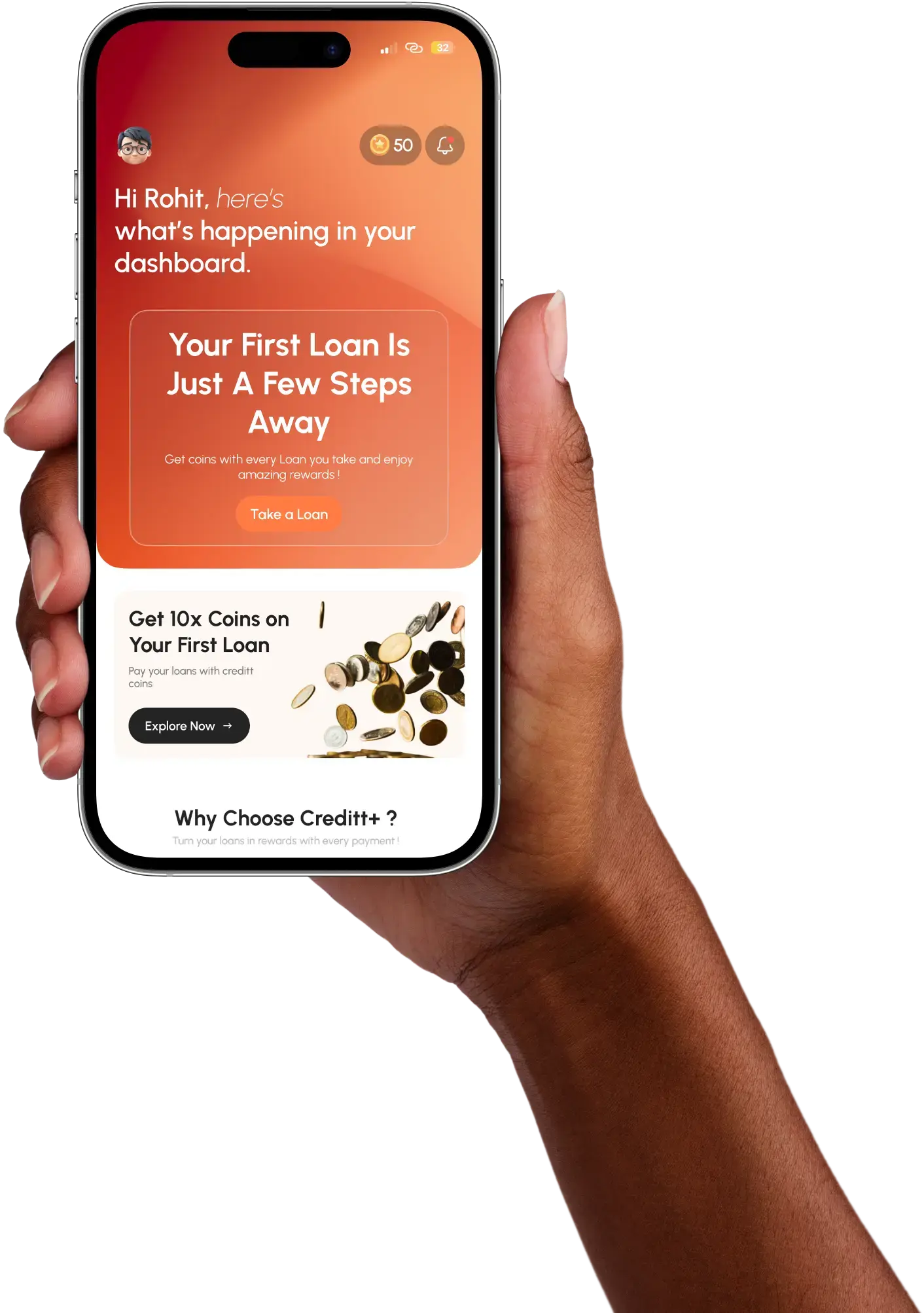Finance terms often sound similar, but the differences between them can impact how you borrow, invest, or manage money. One such pair is loan and debt. While closely related, they are not identical. A loan is a specific form of debt, but debt itself is a broader category that includes various financial obligations.
In practical terms, all loans are debts, but not every debt qualifies as a loan. The difference lies in structure, purpose, and how repayment is handled.
Table of Contents
What is a Loan?
A loan is a contractual borrowing arrangement. A financial institution or lender gives you a specific sum of money upfront. You repay this amount in installments, usually monthly, over an agreed period, with added interest. This setup is common for predictable expenses where you know how much funding is needed.
Loans are used for everything from home renovations to higher education. They are precise, trackable, and offer a structured repayment path. You know the interest rate, you know the term, and you know your monthly obligation from day one.
A loan is not just a product; it’s a commitment backed by repayment discipline.
Where Are Loans Commonly Used?
- Personal Loans: Unsecured funding for lifestyle needs, weddings, or miscellaneous expenses.
- Education Loans: Financing for academic goals, tuition fees, and hostel charges.
- Auto Loans: For purchasing vehicles, typically secured against the vehicle itself.
- Emergency Loans: For time-sensitive situations like medical crises or urgent repairs.
In all these examples, the lender disburses a lump sum, and repayment happens through EMIs. Interest is calculated on the full amount and begins accruing from disbursal.
Types of Loans: Secured and Unsecured
Loans are divided based on whether you’re offering security (also called collateral).
Secured Loans
A secured loan is backed by collateral. This means the borrower pledges an asset such as real estate, gold, or a vehicle, which serves as a guarantee for the lender. If the borrower fails to repay, the lender has the legal right to recover the outstanding amount by selling the pledged asset.
Because the risk to the lender is lower, secured loans usually come with more favourable terms: lower interest rates, longer repayment periods, and higher borrowing limits.
Common examples include:
- Home loans
- Gold loans
- Loans against property
These loans are suitable for larger financial needs where the borrower can offer an asset and is looking for structured repayment over time.
Unsecured Loans
In contrast, unsecured loans do not require any collateral. The lender evaluates your application based on factors like income stability, employment history, and most importantly, your credit score. Since there is no asset to back the loan, the risk to the lender is higher, resulting in comparatively higher interest rates and stricter eligibility criteria.
Examples of unsecured loans include:
- Instant personal loans
- Credit card outstanding balances
- Education loans (in many cases)
Unsecured loans are generally easier and faster to obtain, especially for borrowers with strong credit profiles. They are ideal for short-term or urgent financial needs where offering collateral may not be possible.
What is a Debt?
Debt is an umbrella term. Any borrowed amount you are obligated to repay qualifies as debt. This includes loans like but also bonds, credit card balances, lines of credit, corporate borrowings, and more.
Debt is not restricted to individuals. Corporations, governments, and institutions carry debt, too. It fuels business expansion, infrastructure development, and working capital management.
So when we say “loan vs debt,” we’re comparing a specific type (loan) with the entire category (debt).
Debt in Real Life
- For individuals, debt can mean mortgage balances, credit card dues, EMIs, or a buy-now-pay-later scheme.
- For businesses, debt includes bonds issued to raise capital, commercial borrowings from banks, or long-term debentures.
Debt, unlike loans, doesn’t always involve fixed repayments. It can come with floating interest rates, callable terms, or even convertible conditions.
Types of Debt: Personal and Corporate
Personal Debt
Applies to individuals managing their household or lifestyle needs. This includes:
- Credit cards
- Loans for travel
- Consumer durable financing
- Mortgages and housing loans
It affects your credit score and borrowing capacity. Managing personal debt well reflects financial stability.
Corporate Debt
Applies to businesses seeking capital. This includes:
- Corporate bonds
- Commercial paper
- Debentures
- Bank loans for expansion or operational needs
Companies raise debt through public and private instruments, often with specific terms on interest, maturity, and repayment flexibility.
Key Differences Between Loans and Debts
In short, loans are a structured type of debt, but the word debt encompasses a wide range of obligations: formal or informal, personal or corporate.
When to Use a Loan vs a Debt Instrument
Choosing between a loan and a debt instrument is less about terminology and more about intention, urgency, and scale. Both offer access to funds, but how and when to use them depends on the context of your financial need.
Situations Where a Loan Makes Sense
Loans are ideal when your objective is personal, the required amount is known in advance, and repayment planning is a priority. If you are financing a home renovation, medical treatment, or a child’s education, loans offer the clarity and commitment needed to stay financially organized.
Here’s when a loan is typically more suitable:
- Your borrowing requirement is specific, and you know the exact sum you need to accomplish the task.
- You prefer predictability in repayment, with a fixed EMI and a defined closure date.
- You are applying for quick loans, where the approval is fast and the documentation is minimal, perfect for time-sensitive needs.
- You have a decent credit score or an existing relationship with the bank, which may help you negotiate better terms or interest rates.
Loans work best when the financial obligation is personal, one-time, and requires disciplined repayment over time.
When Debt Instruments Offer a Better Fit
Debt instruments go beyond individual borrowing and are better suited for business funding, long-term financial planning, or strategic investment. They offer design flexibility, some may involve periodic interest-only payments, while others might have bullet repayments or staggered maturity dates.
Consider using debt instruments instead of loans when:
- You are a business looking to raise capital through non-bank avenues such as bonds or debentures.
- The required funds are substantial, and you prefer to structure repayment in a way that aligns with revenue cycles.
- You are expanding operations, investing in infrastructure, or refinancing older liabilities where lump-sum repayments are impractical.
- You want the flexibility of raising money from institutional investors instead of taking on a traditional loan with fixed monthly commitments.
These instruments often come with complex terms and require legal and financial advice, but they offer a scalable model for businesses seeking sustainable financial growth.
Final Thoughts: Choosing the Right Option
Loans and debts both help manage financial requirements, but they are built for different purposes. A loan is ideal when you want funds with clear repayment terms. It suits personal expenses such as higher education, home renovations, or emergency loans, where your need is fixed and you prefer structured repayment.
Debt, as a broader concept, fits well into larger financial ecosystems. It is the go-to choice when businesses raise capital, governments fund infrastructure, or investors earn returns through bonds.
Whether you choose a loan or opt for a debt instrument, remember that both affect your credit score, monthly outgo, and long-term stability. Evaluate the purpose, cost, and risk before making a decision, and when needed, do not hesitate to seek professional financial guidance.
Responsible borrowing is largely dependent on how you manage it wisely.








